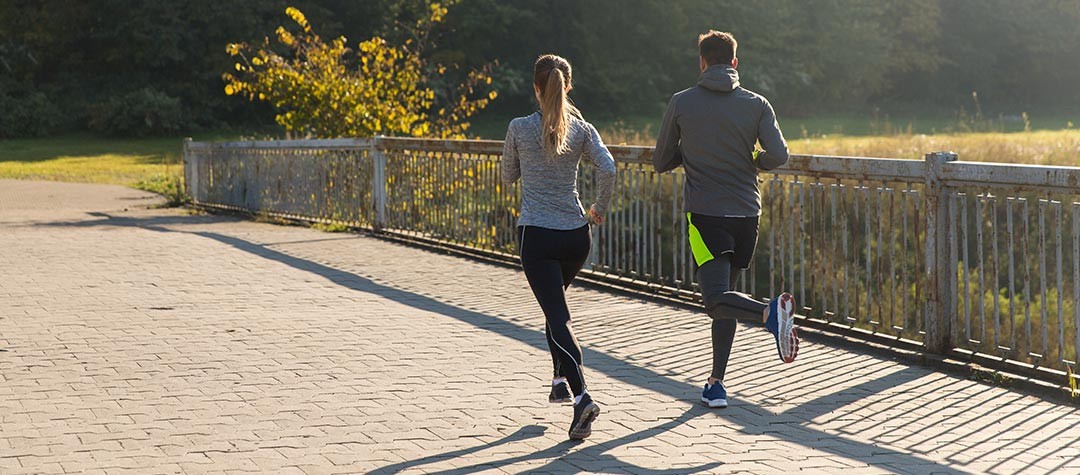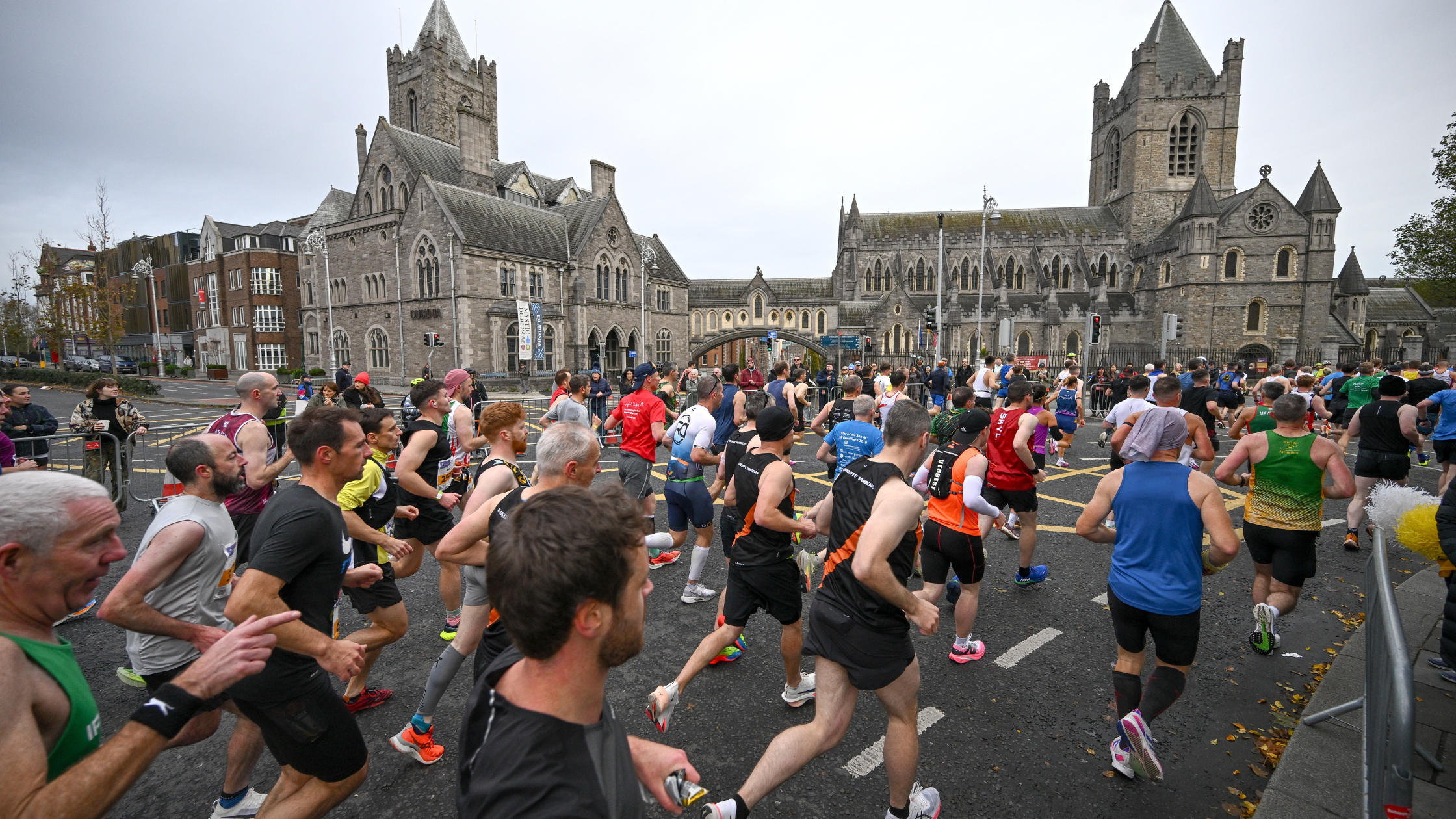Here's your guide to frequently asked running questions. If you have a question about running take a look at these common running problems and issues to find some answers:
Do I need a professional running training plan?
If you want to train for a race, then yes you do. Here are the reasons why:
- You are less likely to get injured when running. Professional run training plans have been written by someone with years of experience, who can work out the optimum sessions for you depending on your goals. They stop any running over-training which can cause injury.
- Motivation for running. If you have a plan of what you are meant to do in your running, you are more likely to do it.
- Running goals. If you get a professional run plan, you will know what is achievable in a certain number of weeks, and have a plan to match your specific goals. For example, to run a 10k race in four months.
How long would it take to train to run a marathon?
This depends on your current level of fitness. If you are a total running beginner, you could do a 24-week beginner training plan and probably get around a marathon course in about four to five hours. You would have to stick to the professionally structured training plan to be able to achieve that. It would be best to start with a few local races; a 5k, then a 10k race, gradually building-up to achieve your running goal of the full marathon. Few would disagree that the longer you train for (in terms of months), and the more gradually you build-up your stamina, the more you will get out of your running.
Why do I need to warm-up before I run?
There are two main reasons for a warm-up:
- To gradually prepare muscles and tendons for the specific stress you are about to apply.
- To gradually raise the heart rate to the running level required.
Warming up is done to avoid injury. Easy jogging followed by stretching floods the working muscles with oxygen-rich blood and raises the body temperature. This makes the body more flexible and allows blood vessels to open up, allowing more oxygen-rich blood to flow into the working muscles. If on top of this you apply some mild stretching, you increase the range of movement, which will help avoid injury. Light exercise like this also releases synovial fluid from small sacs in your joints, allowing lubrication and even wider range of movement.
Increasing your heart rate is an important part of the warm-up. It promotes heat, which warms-up muscles, and it prepares your aerobic system for delivering large amounts of oxygen to the working muscles. Do you ever sprint to catch a bus, then sit down gasping for breath or feel dizzy and wonder what is going on? The gasping breath is because your heart had to instantly try to release oxygen for the demands placed on it. So it sends blood at super-speed to the legs, which leaves you gasping for breath because you can’t get enough oxygen to meet that short term demand and dizzy because the heart has suddenly redirected all the blood flow to your legs.
A warm-up gradually moves the blood to the right places without adversely affecting blood flow anywhere else. This is important at the start of a race, where you suddenly dash off at race pace (often faster than is ideal).
So how do I warm up?
Generally, the faster you run, the more you need to warm up. This is because the faster you run the more your muscles and tendons are stretched to their maximum, and the more stress is put on your aerobic system. Sprinters can spend an hour warming up with jogging, stretching, more stretching and more warming up, all for a 10 second race! Marathoners on the other hand often don’t do any more than a five-minute jog and a few quick stretches.
For normal runs a warm-up might be five minutes of jogging and then some quick stretches. But for a hard session or a 5k race, try jogging for five minutes, then stopping for a minute to go through some basic stretches. Calf muscles, hamstrings, back, achilles tendons etc. Then do another five minutes jogging and a few more quick stretches.
Why do I need to do a cool-down and stretch after my run?
Scientifically, we know it’s important, but nobody can agree on how much we need. What we do know is that by gradually reducing the heart rate and finishing with a few stretches we assist the clearance of the accumulated bi-products of exercise (lactic acid, hydrogen ions, carbon dioxide) while controlling the dissipation of heat. We also know that stretching while the muscles are warm also helps the clearance of the bi-products, while giving muscles and tendons a bigger range of motion.
The harder you have been running, the longer the cool-down needs to be. The best way to cool-down is to ease down to a walk and keep walking until you have your breath back. Then jog lightly for five to 10 minutes, followed by a couple of minutes of walking and lastly some light stretching.
Is there benefit in using a heart rate monitor when running?
Yes there is! If you are fairly serious about your training that is. Distance running is a strange beast; ‘the harder you work the more you’ll gain’ isn’t always true. You can never run too ‘easy’ to get a benefit, but there are times when you can run too ‘hard’. A heart rate monitor is great for controlling when to run hard and when not to.
In the hard training days, a heart rate monitor can be useful to make sure you recover sufficiently and make sure your normal runs are done at the optimum effort without turning them into high intensity workouts.
Aerobic training is generally defined as around 75 per cent of maximum heart rate. So your general steady runs should be whatever your heart rate would be for say 70 to 75 per cent of its maximum. Similarly, long runs (longer than 90 minutes) and high-intensity runs need to be followed by easier recovery days. Generally, easy running is measured as lower than 70 per cent of maximum heart rate. By using a heart rate monitor to control your general running you can make sure you are achieving the right effort in your aerobic running, which is important, and even more importantly, make sure you’re recovering between those harder long runs and high-intensity sessions.
This is crucial. The biggest mistake people make is doing their aerobic and recovery running too hard and over time they are unable to do their high-intensity running hard enough. Using a heart rate monitor will help you avoid that trap.
What exactly is cross-training?
Cross-training is basically activities in addition to running to complement your training. It’s about learning new skills and training in a way that will prepare you best for your running too. Cross-training can also help to reduce the risk of injury.
Finding alternative ways to work your system reduces the continual high impact work on your joints, and it can help avoid monotony and boredom by adding a bit of variety. It will also help your body become or remain toned, strong and flexible. Whatever your training level, cross-training can help you get the results you want.
When you set up your cross-training programme, it’s important that you know what you’re training for and that your goal is to include a varied mix of aerobic and anaerobic activity. Combining cardiovascular training, strength training and flexibility training helps to achieve a proper balance, as these three points are the foundations of any effective fitness programme.















